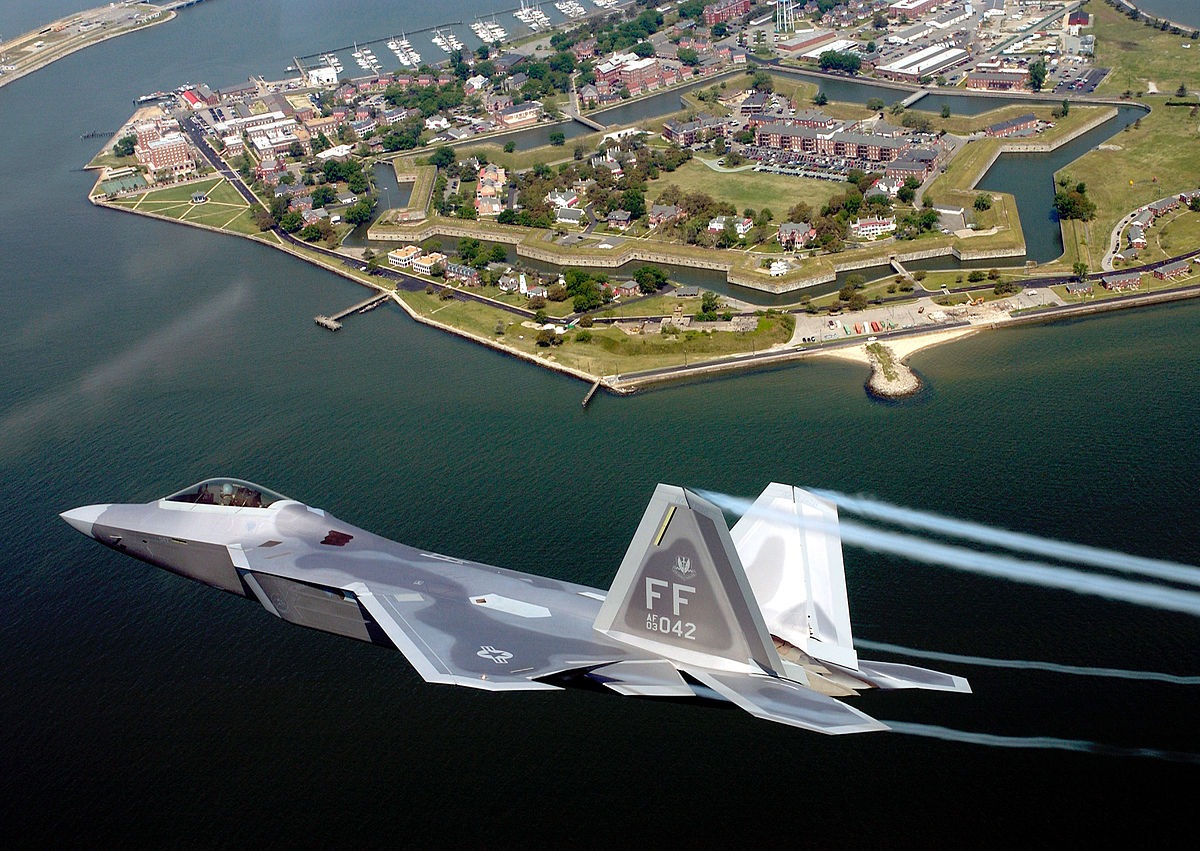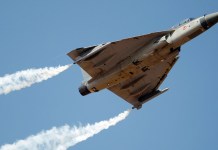Nearly twenty years ago, there was a revolutionary breakthrough in combat aviation when the world’s first fifth-generation combat aircraft, the F-22 Raptor, was officially inducted into service with the US Air Force (USAF).
Combining stealth, supercruise, advanced sensors, and network-centered capabilities, the F-22 Raptor defined fifth-generation characteristics and continues to do so even after two decades.
The F-22 Raptor entered service with the USAF less than one and a half decades after the end of the Cold War in 1991, when the Soviet Union disintegrated into 15 independent states.
The bipolar world has ended, and the multipolar world has not yet emerged. In those years, the US had the sole claim to superpower status. The Soviet Union’s successor state, Russia, was in no position to compete with the US economically, militarily, or technologically.
Still, the Kremlin, led by a young Vladimir Putin, was determined to match the US. Putin, a realist, understood that Moscow lacked the financial resources to support the resource-intensive research required for developing a fifth-generation fighter jet and was seeking a reliable partner.
India, an emerging economic powerhouse and a close strategic defense partner of the Kremlin since the Cold War era, was a natural choice for Putin.
In 2007, just two years after the F-22 Raptor was inducted into the USAF, India and Russia signed an agreement to jointly develop a fifth-generation fighter aircraft (FGFA).
The Joint Indo-Russian FGFA Program
On January 24, 2007, at the prestigious “Aero India,” India and Russia took the world by storm by announcing the joint development of the fifth-generation fighter aircraft (FGFA).
India and Russia were to share funding, engineering, and intellectual property on a 50-50 basis.
Russia envisioned this aircraft to be an answer to the US F-22 Raptor. India envisioned the FGFA as a replacement for the MiG-29, Jaguar, and Mirage-2000 fleets of the IAF.

According to initial timelines, the first flight of the platform was expected in 2009, with serial production commencing in 2015.
Notably, at that time, India was already producing the Su-30 MKI under license at the Hindustan Aeronautics Limited (HAL) facility in Nashik. The first assembled unit of the Su-30 MKI rolled out of the Nashik facility in November 2004.
Similarly, BrahMos, a joint Indo-Russian supersonic cruise missile development program, was a runaway success. The first successful tests were conducted in 2001, and the first missiles were inducted into the Indian Navy by 2005.
By 2006, BrahMos Aerospace had achieved a production rate of 100 missiles per year.
The success of the Su-30 MKI and the BrahMos project gave New Delhi and Moscow confidence in the potential of the FGFA program.
However, from the very beginning, the project was plagued by repeated delays, cost overruns, and differing perceptions of the aircraft’s capabilities. From the beginning, India was more interested in a twin-seat variant of the aircraft, an interest not shared by Moscow.
The planned induction of the aircraft was initially pushed back to 2018 and then further to 2022.
Fearing exorbitant costs, inadequate technology transfer, and a less capable platform that would be nowhere close to the US F-22 Raptor, India left the program in 2018.
It was a massive win for the US, which was looking to dominate a lucrative Indian defense market. The US did not publicly comment on India’s 2018 FGFA withdrawal but quietly celebrated the setback to Russia’s 5th-generation program, which was meant to counter the F-22 Raptor.
As per some reports, Moscow was more interested in promoting the FGFA, aka Su-57, as a rival to the F-22 Raptor and creating media propaganda. Clearly, the Indian Air Force was not interested in financing the propaganda.
World’s Most “Shot Down” Weapon? How C-UAS Tech Is Tackling Drone Threats & Changing The Game: OPED
Meanwhile, CSIS analysts noted that the Su-57’s radar cross-section (RCS) was larger than Western fifth-generation fighters (F-22, F-35), and its stealth was “pseudo-stealth” at best. They supported India’s withdrawal, arguing the FGFA offered limited value for its $25 billion cost, especially given Russia’s reluctance to share source codes and the AL-41F1 engine’s lack of supercruise.
Richard Aboulafia, Teal Group, described the FGFA as a “troubled program” plagued by Russia’s overpromises and underdelivery. He argued India made a “pragmatic choice” to avoid sinking funds into an unproven platform, suggesting the US could fill the gap with F-35s or technology transfers for AMCA.

Ex-IAF Air Marshal Anil Chopra supported the withdrawal, citing Russia’s failure to meet stealth and engine benchmarks. He argued the Su-57’s performance in Syria (2018 trials) was underwhelming, and India’s $295 million investment yielded minimal technological gains.
Former IAF Chief RKS Bhadauria, in 2023, reflecting post-withdrawal, opposed interim fifth-generation imports (e.g., F-35, Su-57), arguing they would divert resources from AMCA. He viewed the FGFA exit as necessary due to Russia’s “lack of transparency” and technical shortfalls, urging faster AMCA development.
Ruslan Pukhov, Centre for Analysis of Strategies and Technologies (Russia), defended the Su-57, arguing India’s withdrawal was shortsighted and driven by US pressure. He claimed the Su-57’s capabilities (e.g., AESA radar, multirole functionality) were competitive, and India’s exit weakened bilateral ties. However, he acknowledged Russia’s delays and limited production capacity.
The Su-57 Felon Enters Service
In 2020, one and a half decades after the F-22 Raptor was inducted into the USAF, the Su-57 (which originated from FGFA) was finally inducted into the Russian Air Force. However, production remained slow, and just two years later, in February 2022, Russia launched its invasion of Ukraine, further exacerbating production delays.
The sanctions imposed in the aftermath of the Ukraine war limited Russia’s access to semiconductors, titanium, and precision tools, hampering Su-57 production.
So far, Russia has inducted a limited number of Su-57 aircraft. The Su-57 has only seen limited action in the Ukraine war, and the aircraft has been used only for firing stand-off missiles.
The Su-57 was envisioned as a competitor to the F-22 Raptor. However, the Raptors have already completed two decades in service and are now nearing retirement. While the US has not set a definitive retirement schedule for the F-22 Raptors, the USAF might start retiring them in the 2030s.
The US Air Force has sought to retire 32 older Block 20 F-22s, used primarily for training, as they lack modern combat capabilities, and upgrading them to Block 30/35 standards would cost over US$50 million per aircraft. However, the US Congress has repeatedly blocked these efforts.
Some sources suggest that the USAF could extend the service life of the Raptors till 2040 or beyond. However, one thing is certain: the F-22 Raptor will not be the USAF’s frontline combat fighter in the 2030s.
The US is already working on its Next Generation Air Dominance (NGAD) fighter, the F-47, which will be a sixth-generation air superiority fighter. The F-47 is expected to enter serial production before the end of President Donald Trump’s second term in 2029.
“They’ve already built much of what has to be built in terms of production, including the sheds,” Trump said in March, while awarding the contract for F-47 to Boeing.
Interesting, now Su-57s are back in the reckoning for the Indian Air Force, as New Delhi is keen to acquire stealth fighters, as China amasses 5th-gen jets and is working on 6th-gen fighters.
Will Russians have the last laugh?




